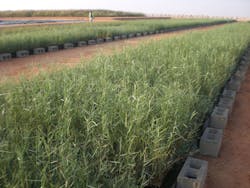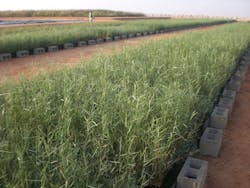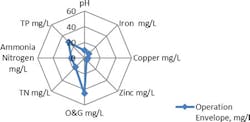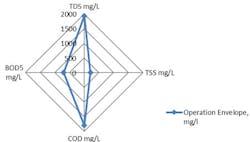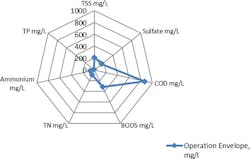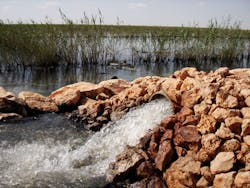Following the success of a constructed wetland in Oman, treating more than 95,000 m3/day of produced water, petrochemical company Shell has reviewed the process to be used on other sites around the world. In this article the engineering team present the findings.
By Adrian Irimia, Georg StockingerConstructed Wetlands: Unlocking Water Treatment Technology At Shell
Constructed Wetlands (CW) or engineered wetlands are water and wastewater treatment technologies well established in runoff control, acid mine water treatment, septage waste, sewage treatment and other applications. They can replace or augment conventional steel and concrete facilities (grey infrastructure), particularly in locations and climates where they offer clear advantages over the conventional approach.
In the Oil & Gas industry this technology has been also applied for a couple of decades in some services, depending on the type of feed water to be treated.
One example is the Petroleum Development Oman LLC, a joint venture with the Shell Petroleum Company and the Government of Oman, which owns the world’s largest commercial wetland covering more than 360 ha and treating more than 95,000 m3/day of produced water.
The plant is designed, built and operated by BAUER Nimr LLC. This plant has been in operation since 2011, consistently producing an effluent at below detectable Oil and Grease content (< 0.5 mg/l). To build upon this success and further capture business value, the Green Infrastructure Programme within Shell looked into the opportunity of introducing wetlands as a water/wastewater treatment technology at par with other treatment processes used within the company. Subsequently, an internal technical assessment and derisking process (Development Release) was completed.
Introduction
The innate ability of natural wetland ecosystems to improve water quality has been recognized for a long time. Over the last several decades, the use of manmade wetlands has evolved into a mainstream water pollution control technology.
Constructed or treatment wetlands are engineered systems designed to mimic and enhance the physical, chemical and biological mechanisms present in natural wetlands and use them to treat various water and wastewater streams.
The CW infrastructure consists of a complex mix of substrate material (hydrosoil) and emergent and submerging vegetation that constitute the support for the growth of biofilm (bacteria populations), and of course, water. In addition to these aesthetic benefits, wetlands create bird habitat - there have been more than 100 species detected at Nimr wetlands in Oman. In some cases, CW could serve as offsets for disturbed natural wetlands.
Higher forms of fauna can also be present. An artificial wetland works like natural wetlands; however engineered wetlands can also engage air injection systems, nutrients addition, pesticide/herbicide use and water level manipulation, for example. The micro-organisms in the root zone of plants feed on hydrocarbon and degrade and convert the pollutants into CO2, N2, substrate and other benign substances.
Considerable information on the design and operation of treatment wetlands has accumulated over time. Therefore, Shell undertook a literature review of available information from outside and inside the company to de-risk the use of this technology across the upstream and downstream operations.
The Shell Water Treatment and Integration department reviewed the technology and addressed technical, commercial, environmental and health and safety related risks potentially to be encountered in its application.
Operation Envelopes
The de-risking review looked at the entire spectrum of available CW configurations and matched it to the potential demand within the Shell businesses. An intensive literature research was employed to understand the experience accumulated with CW in various services: produced water, refinery/petrochemical wastewater, rain-off control, intake water and domestic sewage. The volume of data that was processed was considerable yet showed gaps.
For example not all the presented applications monitored what Shell considers parameters of concern. In most case studies feeds showed a high degree of variability (hydraulic and contamination) which, along with seasonality, impact the conversion rates. Therefore, the quality of both feed and treated effluent is described in terms of intervals.
The results were tabulated and graphics were produced to better visualize the findings and communicate initial conclusions related to the proven area of applicability (‘safe quality feed’) for various services. It should be noted that the plots presented in the following sections are illustrative only and should not be used as a definition for acceptable feed qualities. This is because they show maximum quality limits from separate tests.
For example, while one feed might carry a high O&G load but rather low loads from other contaminants, other successful tests might be operated on feeds of, for example, high TDS loads but low O&G, etc. As such, the plot would show the high O&G concentration from the first test and the high TDS from the second.
Refinery/petrochemical Wastewater
There were a number of articles describing either full field facilities or studies carried out at mesocosm or pilot scale on refinery and petrochemical secondary treated wastewater. The plots below show the principal quality parameters within which the tests were successfully carried out.
Fig. 2 Operation envelope petrochemical water-1
Fig. 3 Operation envelope petrochemical water-2
It should be mentioned that in all cases the feed first undergoes pre-treatment (e.g. activated sludge) and the CW treatment delivers the final polishing before discharge.
Domestic Wastewater & Produced Water
Constructed wetlands have been used for treatment of municipal wastewater for a number of decades. Most of the wetlands used in the last decades have been for polishing municipal wastewater (tertiary treatment). Constructed wetland technology should be used in combination with other treatment technologies. USEPA does not recommend using constructed wetlands for primary treatment of raw municipal sewage, however.
Fig. 4 Operation envelope sewage
Produced Water
Fig.5 shows the minimum and maximum removal efficiencies for a number of significant contaminants.
In general, there is a potential to remove most of the components of concern for Shell (a significant exception being salts), however the efficiency of the CWs seems to be highly variable and dependent on local conditions.
Cross Business Applicability Within Shell
Treatment wetlands are very versatile and could be employed in a large spectrum of Shell businesses. For operating assets, constructed wetlands can bring benefits when replacement of existing water treatment facilities is needed either at the inlet or the outlet of the plant (such as for solids reduction in river water or wastewater polishing, respectively). New projects offer the best prospect for the design and installation of constructed wetlands, however.
In general, treatment wetlands can be applied as:
A means to strategically recapitalize aging water treatment infrastructure that need regular rejuvenation or replacement of equipment (i.e. brownfield applications)
In areas that are environmentally stressed and would benefit from improved land use, enhanced biodiversity, better management of water resources (brownfield and greenfield applications)
They can be adapted to the diverse assets in Shell. For example passive and low manned CWs could be employed in reclamation or decommissioning phases in downstream assets; while more engineered systems (e.g. aerated reed beds) can be applied in active locations where there are operation and maintenance resources available.
Potential Economic Benefits
The basic investment costs for constructed wetlands include land acquisition, site investigation, system design, earthwork, liners, filtration (HF and VF CWs) or rooting (FWS CWs) media, vegetation, hydraulic control structures and miscellaneous costs such as fencing, lighting, or roads. In general, the capital costs for HSSF constructed wetlands are about the same as for conventional treatment systems.
Capital costs for FWS CWs are usually lower mainly because the cost for media is limited to rooting soil on the bottom of the beds. Furthermore, constructed wetlands have low operation and maintenance costs (per m3 treated feed).
OPEX includes pumping, compliance monitoring, maintenance of access roads and berms, pre-treatment systems maintenance (e.g., screens, septic tanks, grit chambers, hydrocyclones for oil removal, etc.), vegetation harvesting, and equipment replacement and repairs. Because of the natural environmental energies at work in constructed treatment wetlands, minimal fossil fuel energy and chemicals are typically needed to meet treatment objectives
There is little literature information on the CAPEX and OPEX of water treatment via constructed wetlands vis-à-vis conventional (grey) infrastructure, and just one in the petrochemical wastewater treatment area.
The relative comparisons of CAPEX and OPEX numbers show that constructed wetlands are cheaper to construct (upwards of 40% cheaper) and that the OPEX figures are considered significantly lower (>80%).
In addition to the above, there are internal learnings from the PDO Nimr oil field produced water treatment reed-bed. Future projects and the debottlenecking of the existing onshore asset base can benefit from the deployment of this technology.
Conclusions
Constructed wetlands have been approved to be treated on par with the more conventional water and wastewater treatment technologies applied in Shell. CWs are now seen as technical systems (in the form of managed ecosystem) that are considered along all the other water treatment processes for new projects or debottlenecking activities. The use of CW in some services (e.g. produced water similar in quality to Nimr, domestic sewage treatment) is adopted as a proven technology.
For other services more work needs to be carried out when the opportunities (projects) arise. In addition, targeted R&D work is being carried out in our Shell Research Centre in Qatar to understand the applicability of CW for the treatment of some contaminants that are found in the produced water such as corrosion inhibitors and hydrate inhibitors.
There are already a number of projects that consider the use of CW for water treatment in Shell. They are at various stages of development, ranging from feasibility study (e.g. treatment of degraded irrigation water) to full deployment (e.g. treatment of runoff at a refinery).
Adrian Irimia is the senior water treatment and integration engineer; Georg Stockinger is senior water treatment & integration engineer; Alfio Mianzan is the environment manager for water and Duska Disselhoff is the green infrastructure programme manager at Shell Global Solutions International BV.
More Water & WasteWater International Archives Issue Articles
